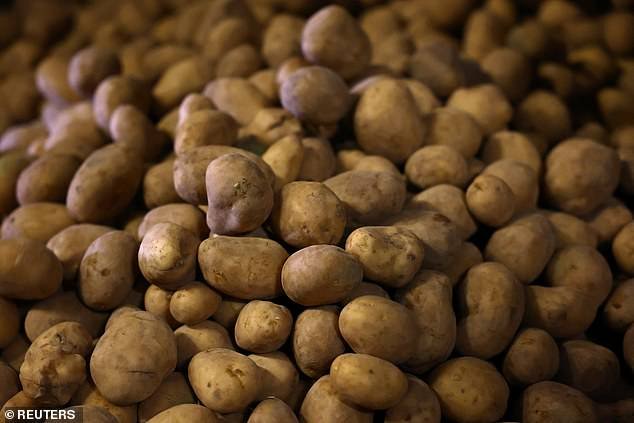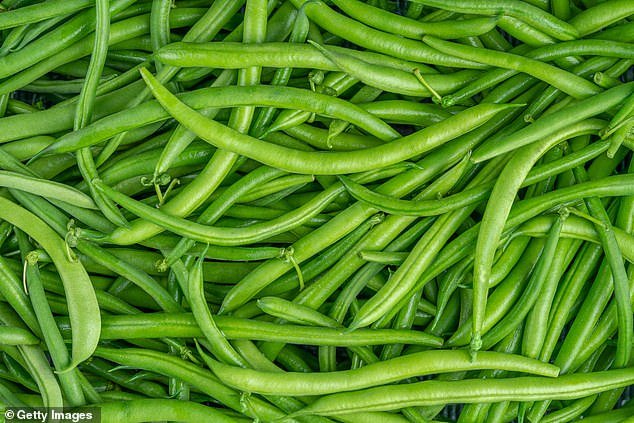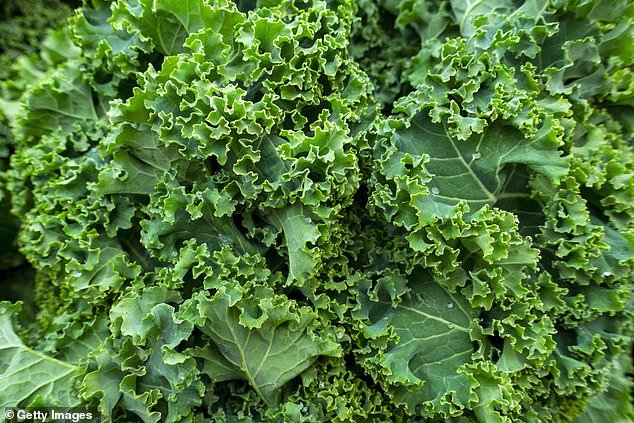Shocking report finds ‘unhealthy’ amount of dangerous pesticides in 20% of all popular fruit and vegetables – including toxic chemicals that are BANNED in US
Popular produce from blueberries to potatoes pose a ‘very high risk’ of unhealthy pesticides linked to cancer and diabetes, a new report has found.
Nonprofit Consumer Reports analyzed seven years of Department of Agriculture data to identify the most pesticide-laden fruits and vegetables that pose the most “unacceptable health risks.”
They found that pesticides posed a “significant risk” in as many as 20 percent of the 59 common fruits and vegetables they studied.
Blueberries, potatoes and peppers were considered very risky, while green beans, kale and watermelon were high risk – meaning pregnant women and children should limit the amount they eat.
In the green beans studied, researchers shockingly found “residues of a pesticide that has been banned from use on the vegetable in the US for more than a decade.”
Nonprofit Consumer Reports analyzed seven years of data from the Department of Agriculture

They found that pesticides posed a ‘significant risk’ in as many as 20 percent of the 59 common fruits and vegetables they studied

Blueberries, potatoes and peppers were considered very risky
Pesticides are sprayed on crops to control insects and weeds, but they contaminate the produce and can pose a risk of cancer, diabetes and cardiovascular disease.
The analysis was based on 30,000 samples of 59 fruits and vegetables, including fresh, frozen, canned and organic, collected from grocery stores by the USDA.
Food was then rated based on its pesticide content and the corresponding health risks it posed, and broken down by grown in the US and imported.
Apples, grapes, peaches, tomatoes, spinach and celery were considered moderate risk, while green beans, kale and watermelon were high risk and blueberries, potatoes and peppers were considered very high risk.
James E. Rogers of Consumer Reports said, “Consumers are being exposed to much higher levels of highly dangerous pesticides than necessary.”
Organic produce generally contains much less pesticide residue than non-organic produce, but some still posed a high risk, including green beans.
Imported food posed a greater risk than home-grown food.
Foods grown in Mexico in particular pose high risks because some of them (including strawberries) contain high concentrations of oxydemeton-methyl, a neurotoxin that can disrupt the development of children.
During the growing process, pesticides are sprayed on fruits and vegetables to keep insects and weeds away, but some pesticides are harmful.
The risks of pesticides increase over time. Consuming contaminated food once is unlikely to cause harm, but eating it repeatedly increases the risk.

During the growing process, pesticides are sprayed on fruits and vegetables to keep insects and weeds away, but some pesticides are harmful

Organic produce generally contains much less pesticide residue than non-organic produce, but some still posed a high risk, including green beans
Children and pregnant women are at particular risk because some pesticides are endocrine disruptors that disrupt the reproductive system and the development of major body systems.
Not all products are risky; 16 of 25 fruits and 21 of 34 vegetables tested showed low pesticide risk, meaning children and pregnant women can safely consume more than three servings of these foods per day.
According to the nonprofit’s analysis, “the greatest risks are posed by just a few pesticides, concentrated in a handful of foods grown on a small portion of U.S. farmland.”
They advise everyone to ‘avoid’ the consumption of high and very high risk products and choose alternatives. “Everyone else should limit consumption of those foods.”
Consumer Reports Senior Scientist Dr Michael Hansen said: ‘We are taking a precautionary approach to ensure we do not underestimate the risks.’
